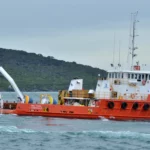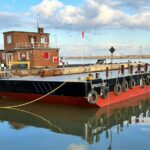In the ever-evolving world of boating and commercial marine, it’s imperative to stay ahead of the regulatory changes. The Australian Maritime Safety Authority (AMSA) has introduced notable amendments to Marine Order 504 and 505, stirring significant interest among marine enthusiasts, professionals, and operators.
Unveiling the Basics: What Are Marine Orders 504 and 505?
Let’s start at the helm, understanding the fundamental aspects of Marine Order 504 and 505. These orders, governed by AMSA, set the standard for the safe operation and maintenance of vessels in Australian waters. They encompass a spectrum of critical areas, from vessel construction, safety equipment, operational standards, crew competency, to environmental considerations.
AMSA’s Role in Evolving Maritime Standards
AMSA plays a pivotal role in ensuring safety and environmental sustainability within Australia’s maritime industry. As part of their commitment, they periodically update regulations to align with technological advancements, industry best practices, and international standards.
What’s New in Marine Order 504?
The recent adjustments in Marine Order 504 have triggered substantial curiosity. One notable change revolves around enhanced safety protocols. Vessels now require updated safety equipment and procedures, including but not limited to:
- Emergency Response Plans: Vessels must now implement detailed emergency response plans, outlining procedures for various scenarios, ensuring swift and efficient responses during crises.
- Crew Competency Standards: Stricter guidelines for crew training and qualifications have been introduced to uphold operational safety.
- Vessel Inspections and Maintenance: More stringent inspection and maintenance requirements for vessel machinery and equipment are now mandated to ensure optimal performance and safety.
Deciphering Marine Order 505 Updates
Moving on to Marine Order 505, the alterations here have also piqued the interest of the maritime community. The recent changes predominantly focus on environmental standards and operational practices, including:
- Environmental Compliance: Vessels are now subject to more rigorous environmental compliance measures, ensuring reduced ecological impact during operations.
- Waste Management Protocols: Emphasis on proper waste management strategies to minimize environmental pollution and ensure responsible disposal of waste generated on vessels.
- Navigational Safety: Updated navigational safety protocols, integrating technological advancements and best practices to mitigate risks and enhance overall safety.
Impact on the Commercial Marine Industry
The implications of these alterations on the commercial marine industry are substantial. The industry, catering to diverse sectors such as shipping, fishing, tourism, and transportation, must adapt to these changes promptly. Adhering to the updated orders is not just a legal obligation but a crucial step in ensuring the safety of crew, passengers, and the environment.
How to Stay Compliant and Proactive
Staying compliant with these new orders is a paramount concern for all marine operators. To facilitate a smooth transition, consider these proactive steps:
- Regular Updates and Training: Keep your crew updated with the latest regulations and provide them with necessary training to meet the new standards.
- Vessel Inspections and Upgrades: Conduct thorough vessel inspections and necessary upgrades to ensure compliance with safety and environmental standards.
- Consultation and Compliance Services: Seek guidance from experts and compliance services to navigate through these regulatory changes seamlessly.
Keeping up with Change
Adapting to the updated Marine Orders 504 and 505 is not merely about meeting regulatory requirements; it’s about fostering a culture of safety, responsibility, and sustainability within the marine industry. AMSA’s commitment to evolving standards is a testament to their dedication to ensuring a safe and environmentally conscious maritime landscape.
Keep an eye on the horizon for further developments and updates in these orders, as the regulatory landscape continues to evolve. Embrace these changes as opportunities to enhance operational efficiency, safety, and environmental consciousness within the vibrant world of commercial marine.
Stay ahead, stay compliant, and sail towards a safer and more sustainable future!
By dissecting the intricate details and implications of these amendments, we can better equip ourselves to navigate the waters of change within the commercial marine industry. Stay tuned for more insights and updates on how to adapt effectively to these shifts in the maritime landscape.
Find out more about these changes with AMSA. You can read about them here.









